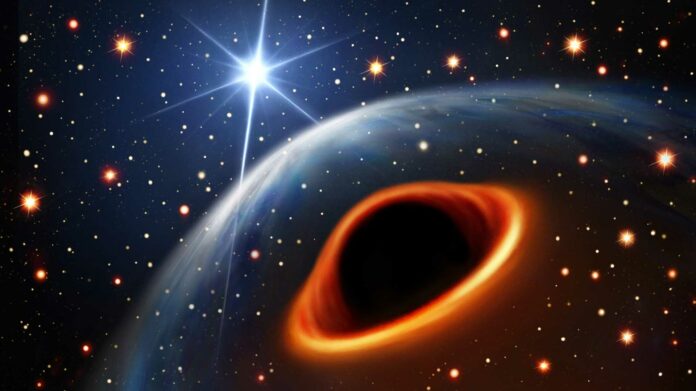A significant mass gap exists between the heaviest measured neutron stars and the lightest measured black holes. This mass gap provides valuable information about the formation processes of both neutron stars and black holes during supernovae.
An international team of astronomers utilizing the MeerKAT Radio Telescope has identified a previously unknown object in the Milky Way. This object is heavier than the heaviest known neutron stars but lighter than the lightest known black holes. It orbits a rapidly spinning millisecond pulsar in a globular cluster about 40,000 light years away. The researchers used the pulsar’s precise pulses to determine that the massive object falls within the “black hole mass gap.”
This discovery could be the first instance of a radio pulsar–black hole binary, offering opportunities to test Einstein’s general relativity and advance our understanding of black holes.
UK project lead Ben Stappers, Professor of Astrophysics at the University of Manchester, said, “Either possibility for the nature of the companion is exciting. A pulsar–black hole system will be an important target for testing theories of gravity. A heavy neutron star will provide new insights in nuclear physics at very high densities.”
When a neutron star, the dense remains of a dead star, accumulates too much mass—typically through interactions with or consumption of another star—it undergoes collapse. The outcome of this collapse is a subject of speculation, with the possibility that it transforms into a black hole, an object so gravitationally powerful that even light cannot escape it.
Astronomers theorize that a neutron star requires a mass of 2.2 times that of the sun to collapse. However, the observed lightest black holes formed from such collapses are much larger, approximately five times the sun’s mass, leading to the ‘black hole mass gap.’
Objects within this mass gap have remained enigmatic, and detailed study has been challenging. The discovery of this new object may provide valuable insights into understanding these enigmatic celestial entities.
Prof Stappers added: “The ability of the extremely sensitive MeerKAT telescope to reveal and study these objects is enabling a great step forward and provides us with a glimpse of what will be possible with the Square Kilometre Array.”
This object was discovered during observations of the globular cluster NGC 1851 using the MeerKAT telescope. NGC 1851 is a dense cluster of old stars, more tightly packed than the stars in the rest of the Galaxy, allowing for interactions, disruptions, and even collisions between stars.
The astronomers, part of the international Transients and Pulsars with MeerKAT (TRAPUM) collaboration, propose that a collision between two neutron stars within this cluster may have resulted in the formation of the massive object orbiting the radio pulsar.
The team could make exact measurements of its orbital motion by detecting faint pulses from one of the stars, identified as a radio pulsar. The pulsar spins more than 170 times per second, emitting rhythmic pulses like a cosmic lighthouse, and the observations using pulsar timing allowed for detailed analysis of its orbital behavior.
Ewan Barr from the Max Planck Institute for Radio Astronomy, who led the study with his colleague Arunima Dutta, said, “Think of it like being able to drop an almost perfect stopwatch into orbit around a star almost 40,000 light years away and then being able to time those orbits with microsecond precision.”
The precise timing of the pulsar’s pulses enabled astronomers to accurately measure the system’s location, revealing that the object orbiting the pulsar is not a regular star but a highly dense remnant of a collapsed star. Observations indicated that this companion possesses a mass more significant than any known neutron star yet smaller than any known black hole, placing it within the black-hole mass gap.
While the researchers cannot definitively state whether this discovery is the most massive neutron star, the lightest black hole, or a new exotic stellar variant, they have unquestionably identified a unique celestial laboratory for investigating the properties of matter under extreme conditions in the Universe.
Arunima Dutta concludes: “We’re still working on this system.
“Uncovering the true nature of the companion will be a turning point in our understanding of neutron stars, black holes, and whatever else might be lurking in the black hole mass gap.”
Journal Reference:
- Barr, E. D., Dutta, A., C. Freire, P. C., Cadelano, M., Gautam, T., Kramer, M., Pallanca, C., Ransom, S. M., Ridolfi, A., Stappers, B. W., Tauris, T. M., Krishnan, V. V., Wex, N., Bailes, M., Behrend, J., Buchner, S., Burgay, M., Chen, W., Champion, D. J., Possenti, A. (2024). A pulsar is a binary with a compact object in the mass gap between neutron stars and black holes. Science. DOI: 10.1126/science.adg3005
